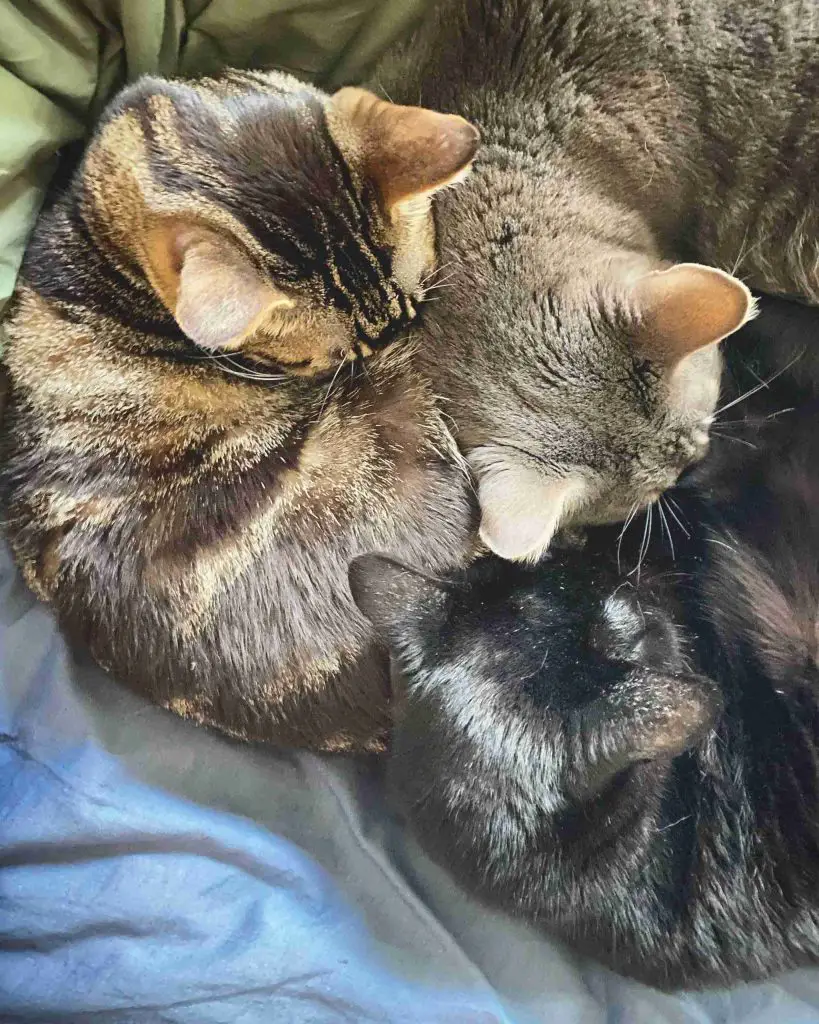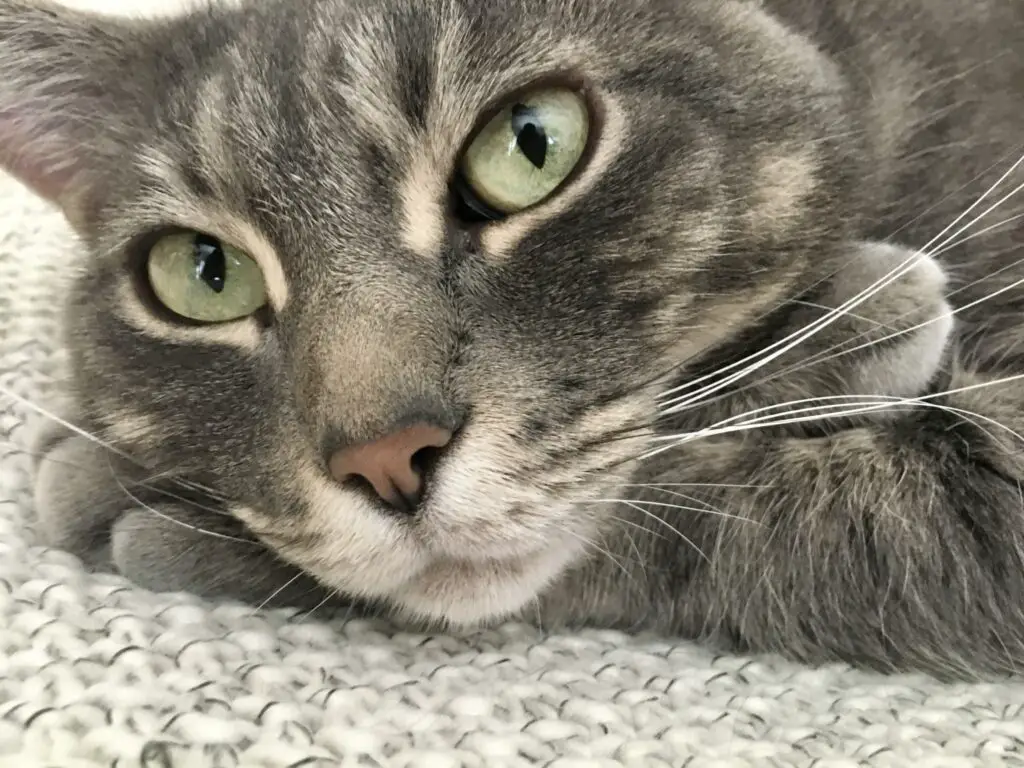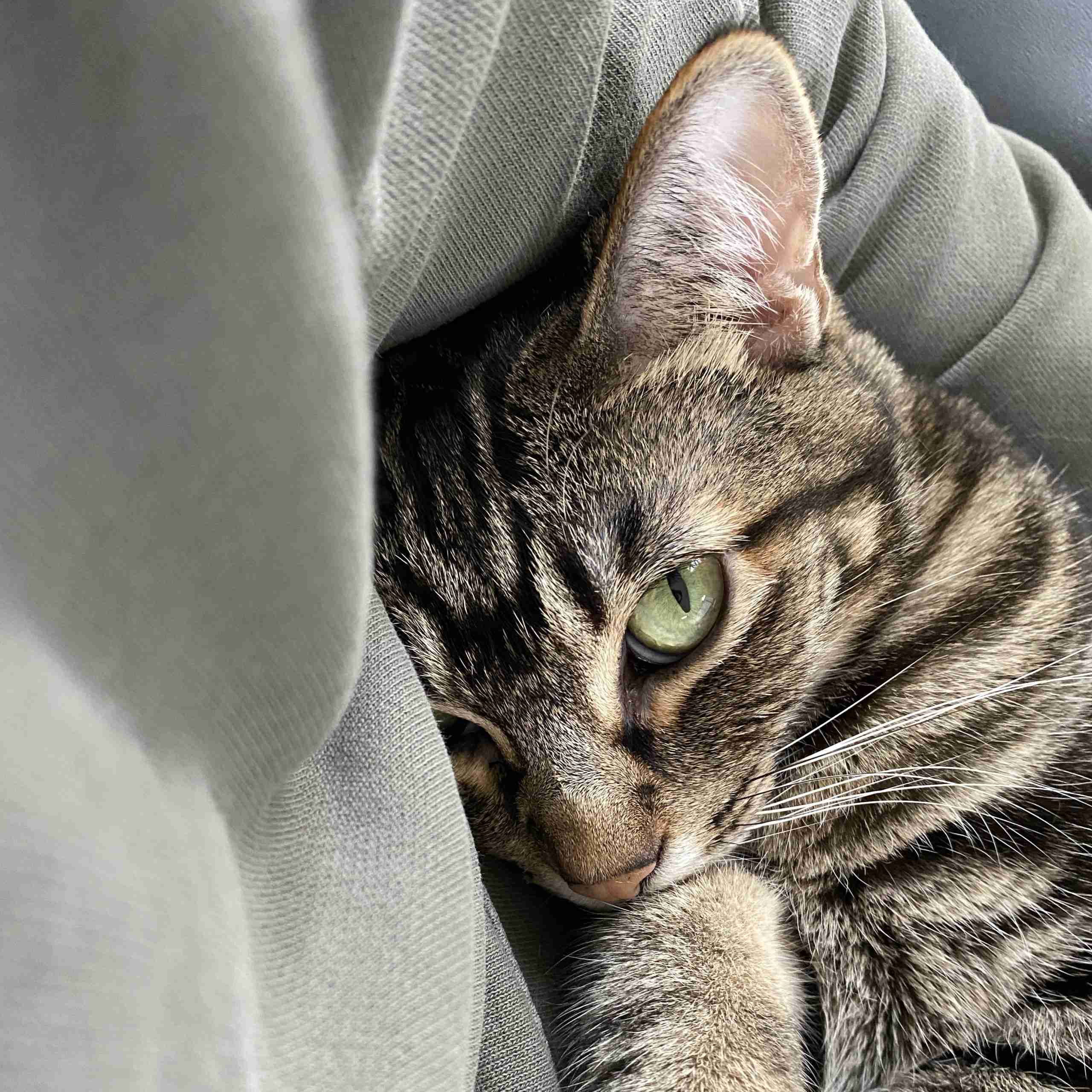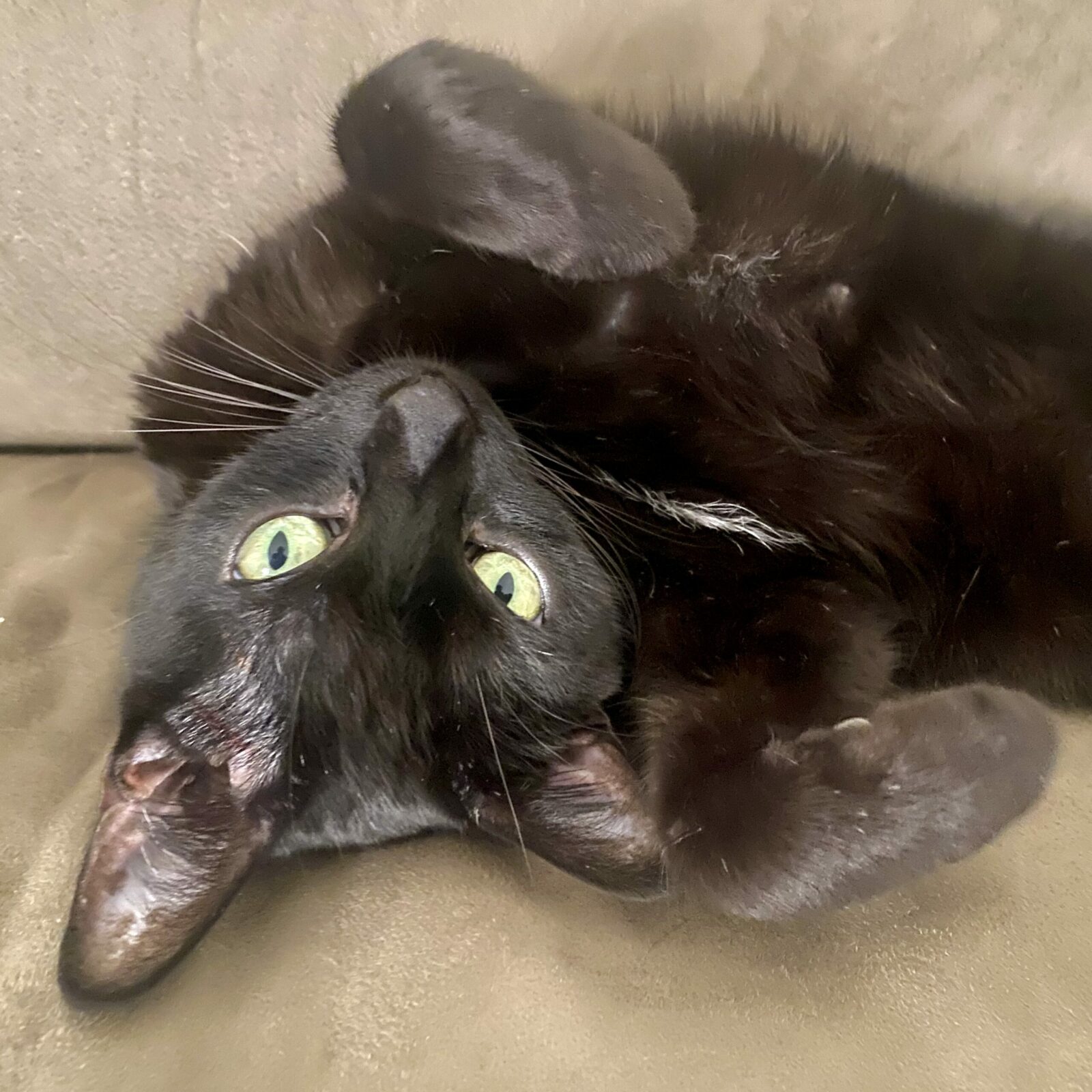About VerveCat
VerveCat was inspired by my journey of fostering a litter of week-old kittens rescued from a warehouse in Central California, and life since then with these three. Scroll down for more of the story.
My Journey in Cat Companionship
Hey there, I’m David, VerveCat founder and cat lover since, well pretty much forever. VerveCat is a labor of love and was inspired by my own three cats currently with me, as well as several that came before them.
Cat Lover from the Start
I was four years old when we adopted our first family cat, a sweet gray tabby kitten named Chessie, from neighbors down the block. She was named after the Chesapeake car ferry that crosses Lake Michigan from Ludington to Manitowok – a trip my family made each summer to visit my grandma in Door County, Wisconsin.
Chessie was a special one in many ways. She had kittens on her 1st birthday, and gave birth in the middle of my mom’s bed at 3:00 in the morning. My mom woke my two sisters and me up and we witnessed the entire process in total awe and wonder. I got to name one of the four kittens and decided to call an orange tabby “Jeff.” I’m not sure why.
I helped raise and socialize the kittens, and became quite attached. Despite my pleas to add them to our family, all of the kittens were adopted out to good homes around the neighborhood. Oh, and we did get Chessie spayed soon after – better late than never.
After Chessie, there was Bella, a gray and peach tortie, and then Machi and Momo, tuxedo siblings adopted from a rescue foster. There’s something that’s just so comforting about having a cat or three around the house. And for the few years of my life that I’ve lived without a cat, I definitely missed having a majestic beast basking in a sunny window, curled up on my lap after dinner, or zooming from one end of the house to the other as if possessed by demons.

The Story of My Current Cast of Characters
I’ve had my current crew of three since 2013, and they are the inspiration for starting VerveCat. They arrived during a difficult time in my life. I was processing the breakup of a long relationship, my mom had developed a terminal illness, and I was struggling to reach the finish line of a very long journey through grad school, all while looking for my first job as an educational psychologist.
I decided that rescuing and raising a litter of kittens would be a good way to process the grief and loss and keep me moving, so I signed up to be a foster for a local animal rescue agency. My goal was to be matched with as young a litter as possible.
That way, I could be a part of raising them from very early in their lives, and I would keep the two I bonded most with while finding good homes for the others. I was busy though, so I requested a litter with their mama so that I wouldn’t have to bottle feed the kittens every two hours around the clock.
Several weeks later, I found myself carrying a crate into my little cottage, a chorus of the faintest mews coming from a tiny bundle of week-old kittens inside. They had been found in a field behind a warehouse in Modesto, California.
There were three girls and three boys. Four of them were brown marbled-tabbies, like their mama, one was black with wisps of white on her chest and armpits, and the other was a gray tabby with spots on his cream-colored belly and cream highlights around his eyes.
This gray kitten looked weak and pathetic, and we were worried from the start that he might not survive. He was much smaller than his sibs, he had one eye that still didn’t want to open, and in the first couple days he seemed to be getting weaker as the others grew.
This is when I first learned about the strange and sad phenomenon known as “fading kitten syndrome” – when the runt of a litter, despite no identifiable injury or illness, mysteriously just fails to thrive and eventually dies. Well, that just wasn’t going to happen if I had anything to say about it.
I noticed that the two girl tabbies were the alphas of the litter, and that meant that they always got the best spots to nurse (the top nipples produce better and more milk). On the other hand, as the runt, this little gray guy would always get shoved down to the bottom by his sisters. Sometimes he would quickly end up out of reach of his mama altogether, leaving him with no milk.
So I sat with the kittens at feeding time, I placed the gray one in the best spot, and I put my hand between him and the others so no one could push him off. And I kept my hand there until he was done eating. Lo and behold, that kitten got stronger, and began to thrive.
And that’s how Gandalf got his start in the world. After all of that, there was no way I wasn’t going to adopt him.
The folks at the rescue agency laughed at me when I told them it was too hard to decide and I was actually going to keep three instead of two as planned. “We call that the Foster Fail!” one of them said with a wry smile. Yah. I failed.

The VerveCat Project
VerveCat.com launched in Fall 2023. New articles are being published every week as we aim to grow into a comprehensive source for information, resources, and reviews for all cat guardians.
The photos on this site are mostly of my cats – Phoebe, Bean, and Gandalf. You’ll also find them featured frequently in anecdotes throughout VerveCat content.
Please feel free to reach out to meow@vervecat.com if you have questions or comments, or with suggestions for article topics you’ve found the internet doesn’t yet address well. You can also use the Contact Page to send a message.
I very much appreciate you being here and reading my story. And I hope you find the content on this site helpful in some way with your own journey in cat companionship.
-Dave
David Hill, VerveCat Founder and Author


